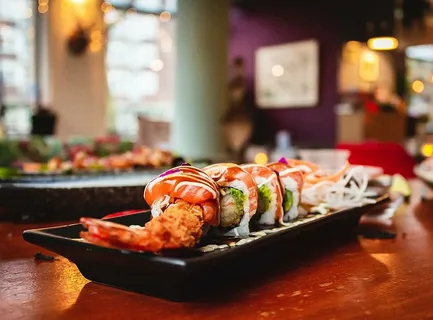When choosing the top sushi restaurant, look at freshness, authenticity and all-around dining experience. The initial step would be to research the reviews and ratings by visiting the websites and checking the restaurants that deal in high-quality, fresh ingredients. Seek out restaurants which not only offer traditional sushi rolls such as nigiri and sashimi but also imaginative rolls. It requires an experienced, expert sushi chef, or an itamae person trained in patience and accuracy. A pleasant experience also entails cleanliness and atmosphere. Think about the origin of the fish; high-end sushi restaurants often care about more sustainable, seasonal fish. When you can, observe it being prepared; sushi must be prepared carefully and skilfully. Last, but not least, the most appropriate sushi restaurant is a combination of taste, freshness, and real authenticity that makes the meal memorable. There are some things that one should know while choosing the best sushi Restaurant, like:
- Start with Research and Recommendations: Some research is the first step in locating a good sushi restaurant. Find reviews on Google, Yelp and TripAdvisor, and note down any consistent raves and gripes, especially those about freshness, hygiene, and service. Lesser-known gems can also be found using personal referrals by friends, relatives or local food movements. Seek restaurants with Japanese customers or blogs written by Japanese specialists in food who will usually guide you to the most authentic and quality sushi.
- Check the Chef’s Credentials: The sushi chefs or itamae often had years of strenuous training that ranged from learning rice preparation to how to carefully wield the knife. At the high-end sushi restaurants, the fame and the experience of the chef are essential as the food. A master chef is not required to have delicious sushi, but knowing the chef’s background, it is often possible to see how serious a restaurant is about quality. The credentials of many traditional or high-end sushi bars are presented prominently on the menu or the website, and are indicative of their experience and dedication to their calling.
- Inspect Cleanliness and Atmosphere: Sushi is all about cleanliness, as it portrays the way raw fish and other ingredients are handled. The floors, counters, and restrooms should have no stains at all when you walk into a sushi restaurant; this is a good sign that the foods are prepared well. Besides hygiene, it matters about the atmosphere. An atmospheric sushi place must be relaxed, friendly, and considerate of the table. Be it a casual conveyor belt restaurant or a tiny little bar, the ambience should be representative of the quality that the restaurant is keen to offer.
- Assess the Fish Quality: The showpiece of any sushi dish is the fish, and it must be fresh, as it should smell clean with no pungent fishiness. The fish must not be dull, greyish, slimy or too watery and cold. At good sushi restaurants, fish is often flown in, or fresh at local markets, multiple times a week, from Japan. Be not afraid to ask regarding sourcing; genuine places tend to give information readily. Sushi that is sauced a lot can cover up low-quality fish.
- Evaluate the Rice: The fish is equally crucial to fine sushi as well as rice (shari). Sushi rice must be slightly warm, lightly seasoned with the vinegar and with just the right density, which is not too soft, but also not too firm, yet holds together. When the rice is bland, firm, or even looks like it was refrigerated, it is a clear sign that it is of low quality. Most sushi chefs take years to master their rice, as making it is a key element of the process. When it is properly handled, it enhances the quality of the rice, bite by bite and instantaneously.
In conclusion, these tips should be taken into consideration to choose the best sushi restaurant, such as sushi restaurant framingham, because it requires more than having a good review about a restaurant. In order to discover famous locations, the best place to start is by researching and personal recommendations. Focus on cleanliness and ambience since it speaks of the overall quality of a restaurant. Check the bio of the chef to see his credentials in terms of experience and commitment to the field. Above all, check the quality of the fish and rice, which is central to most good sushi. Good signs of quality are fresh, bright fish and clean, scented rice, just right in temperature and well seasoned. Do not hesitate to question how they sourced it out or prepared it; authentic eateries will be glad to tell you their procedure. The most fantastic sushi restaurants are those that blend taste, freshness, and tradition to perfection, creating a fruitful and high-quality dining experience, regardless of whether you opt for casual or omakase sushi.
